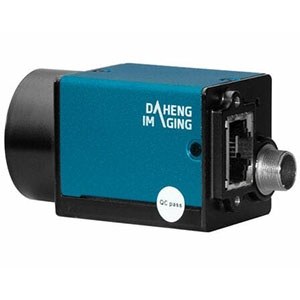Five features to note when buying machine vision camerasPosted by James Carter on April 20th, 2023  When you choose to update your system and integrate technology into the existing system, it is important to look for vision camera that are high-resolution and efficient in their performance. But keeping in view the amount of variation and features that are offered in the market, it becomes quite a daunting task to choose the right kind of USB3 vision camera for your industry. However, when you are looking for something that provides high-end performance and also gives you an edge over the others, it is important to carry out research about the product before you choose to invest in machine vision camera. If you are looking for something that is beyond the ordinary and gels along well with your existing system, then there are a number of aspects that one needs to keep in mind.
The image resolution of a camera is the number of pixels it can capture in an image. Higher-resolution cameras can capture more detail and are better suited for applications where fine details are important, but they also tend to be more expensive. Consider your application and the level of detail you require before selecting a camera with an appropriate image resolution. The need for the high-resolution image and the pixels of the camera are determined by its usage and also the requirements of your system. It is important to understand what image resolution is most suited for your system and only then make the selection accordingly.
There are multiple factors that determine the efficiency and accuracy of your vision cameras, and one among them is the frame rate. Suppose you are not acquainted with what the frame rate is. The frame rate of a camera is the number of images it can capture per second. A higher frame rate is desirable for applications that require capturing fast-moving objects or processes. Again, consider your application needs and choose a camera with a suitable frame rate. However, those who are new to the world of technology may find it difficult to determine what frame rate may be suitable for your system and what is not. Therefore, talking to the expert and seeking guidance in making the selection of vision cameras is always recommended.
The sensitivity of a camera refers to its ability to capture images in low light conditions. Cameras with higher sensitivity are better suited for applications that require capturing images in low light, such as microscopy or astronomy. For products that are manufactured in high-sensitivity areas, such as medical equipment and other essentials, need to have vision cameras that have a high sensitivity rate.
Machine vision cameras typically use one of several common interfaces, such as USB, Gigabit Ethernet, or Camera Link. Make sure the camera you choose is compatible with the interface you plan to use. Moreover, at times it is not necessary for you to buy the complete system to update it to modern technology, and therefore, all you need to have is an updated system that could integrate into the system and provide you with all the essential features of the system.
The size and form factor of a camera can impact its ease of use and installation. Consider the size and shape of the camera to ensure it will fit in the space available and can be mounted securely in your application. These are some of the features that are important to note when you are looking to buy vision cameras for your system. Like it? Share it!More by this author |


